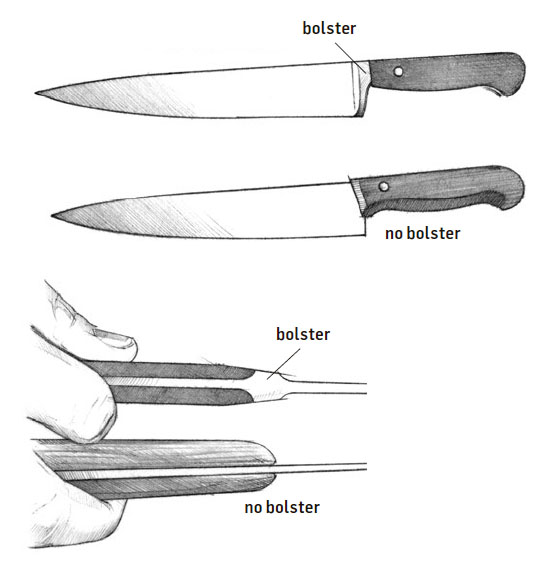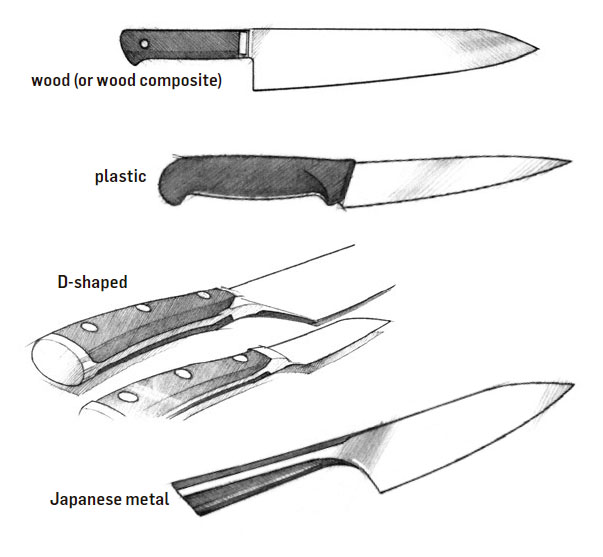Comfort and balance
When you buy your knives, especially your chef’s knife, it’s crucial that your knife be comfortable for you. If it’s not comfortable, you won’t use it. It’s that simple.
This is completely subjective and may be hardest to decide. What’s comfortable for me might not be comfortable for you. My preference is a
Comfortable also means how the handle feels in your hand. You have at least four choices: a traditional wooden or wood composite handle found on European knives, a
The knife also has to feel balanced. This too is completely personal and up to you. What does balanced mean? After determining that the handle is comfortable, this leaves the weight and tipping of the knife to be determined. When you hold it in the air, does it tip forward like it has too much weight in the blade? Does it tip backward, or lift up, because the handle feels too heavy and the blade feels too light?
There’s no formula or chart to match the handle and balance. It’s solely a matter of what you like and feel. A knife might feel perfect to me, but not to you. So when you’re knife shopping, hold as many knives as you possibly can (but not at once!), for two reasons: You’ll have this knife forever. And you’ll never use a knife that you don’t like.










